Comments / Questions (35)
![]() Manuela wrote:
Manuela wrote:
Quando chego à 6.ª carreira, em A.2, não sei continuar depois dos 2 pontos correntes e 1 ponto baixo (na parte da rede depois da pétala). Ou seja, faço 1 ponto baixo e 4 pontos corrente alternadamente e, no fim, 1 ponto baixo e 5 pontos corrente? Penso que não estou a interpretar bem esta parte. Será que me podem ajudar, por favor? Têm algum vídeo que mostre a diminuição das pétalas e início da rede?Obrigada
04.04.2024 - 20:54
![]() DUPIRE-LE LÉANNEC wrote:
DUPIRE-LE LÉANNEC wrote:
Bonjour, Sur le 1er rang d’arceaux, on en a 30. Et sur les suivants, on y en a t’il 30 aussi ? Car au 2ème rang je me retrouve avec 29 arceaux. Merci d’avance
27.07.2023 - 15:12DROPS Design answered:
Bonjour Mme Dupire-Le Léannec, vous devez toujours bien avoir 30 arceaux tout le tour; le dernier arceau doit être celui crocheté autour de l'arceau où vous avez mis le marqueur au début du tour. Bon crochet!
27.07.2023 - 16:32
![]() Raffaella wrote:
Raffaella wrote:
Grazie !!! Facilissima da fare, velocissima e bellissima. Ne farò tante di colori diversi e anche multicolore per finire avanzi di filato
24.06.2022 - 21:39
![]() Marie-France Leroux wrote:
Marie-France Leroux wrote:
Bonjour . Travailler le rond en spirale cela est-il possible
09.09.2021 - 06:35DROPS Design answered:
Bonjour Mme Leroux, probablement, mais pensez à faire les ajustements nécessaires (le nombre de mailles en l'air des arceaux augmente puis rétrécit en fonction des tours). Bon crochet!
09.09.2021 - 09:02
![]() Silvia wrote:
Silvia wrote:
Buonasera! Per quanto riguarda il bordo al punto 4, bisogna tornare indietro dopo aver lavorato le seconde 25 maglie basse? Grazie infinite
04.08.2021 - 19:31DROPS Design answered:
Buonasera Silvia, il lavoro è in tondo, quindi alla fine del giro 4 inizia il giro 5. Buon lavoro!
06.08.2021 - 19:12
![]() Hanne Mau wrote:
Hanne Mau wrote:
Anja Jervin hej du skal ud ligesom i 6 tabellen når man tager ud for man jo flere m mellem udtagninger 1 omg 6m 2 omg 12 m 3 omg 18 m 4 omg 24 m 5 omg 30 m 6 omg 36 m 7 omg 42 m 8 omg 48 m 9 omg 54 m 10 omg 60 m
12.05.2020 - 13:16
![]() Iarger wrote:
Iarger wrote:
Combien de pelotes de coton drops faut il ? Je n ai pas vu si c était indiqué. Merci
13.04.2020 - 09:15DROPS Design answered:
Bonjour Mme Larger, il faudra 3 pelotes de DROPS Muskat pour réaliser ce sac, les quantités sont toujours indiquées au poids au début des explications. Bon crochet!
14.04.2020 - 12:30
![]() Anja Jervin wrote:
Anja Jervin wrote:
Jeg er nybegynder og forstår ikke sætningen under omgang 5-10 står der "der hækles 1 maske mere før hver udtagning på hver omgang" kan I oversætte?
26.03.2020 - 19:39DROPS Design answered:
Hei Anja. I 3.omgang heklet du 1 fastmaske før du i neste maske hekler 2 fastmasker (øker). I 4. omgang hekler du 1 fastmaske i hver av de 2 neste fastmaskene før du i neste maske hekler 2 fastmasker (øker). I 5. omgang hekler du 1 fastmaske i hver av de 3 neste fastmaskene før du i neste maske hekler 2 fastmasker (øker). I 6. omgang hekler du 1 fastmaske i hver av de 4 neste fastmaskene før du i neste maske hekler 2 fastmasker (øker). Osv osv, altså du hekler 1 maske mer før du hekler 2 masker i 1 maske (øker). God Fornøyelse!
30.03.2020 - 14:29
![]() Kathy Almonte wrote:
Kathy Almonte wrote:
When we start the edge, do you do as on the bottom ie; chain one for first stitch .?
13.06.2019 - 21:24DROPS Design answered:
Dear Mrs Almonte, you should replace 1st hdc with 1 chain and 1st dc with 1 ch (see CROCHET INFO). Happy crocheting!
14.06.2019 - 07:21
![]() Veronica Bellotti wrote:
Veronica Bellotti wrote:
Cosa vuol dire GIRI 5-10: Continuare a lavorare e aumentare in questo modo, lavorare 1 maglia in più prima di ogni aumento su ogni giro ? grazie
11.06.2019 - 12:47DROPS Design answered:
Buongiorno Veronica. P.es al giro 5, lavora 1 m.bassa in ognuna delle prime 3 maglie, 2 maglie basse nella maglia successiva e così su tutto il giro. Al giro 6, lavora 1 m bassa in ognuna delle prime 4 maglie, 2 maglie basse nella maglia successiva e così su tutto il giro. Ad ogni giro lavora 1 maglia in più prima di lavorare 2 maglie nella stessa maglia. Buon lavoro!
11.06.2019 - 12:55
Sugar Mesh#sugarmeshbag |
|
 |
 |
Crocheted shopping net/tote bag with chain-spaces. Piece is crocheted bottom up in DROPS Muskat.
DROPS 187-17 |
|
|
INFORMATION FOR PATTERN: CROCHET INFO (applies to bottom and edge): Replace first single crochet with 1 chain stitch and finish round with 1 slip stitch in 1st chain stitch. Replace first half double crochet with 2 chain stitches and finish round with 1 slip stitch in 2nd chain stitch. ---------------------------------------------------------- SHOPPING NET: Begin shopping net with a circle with single crochets in the base, then work chain-spaces to form the net. Then work an edge with a handle in each side. BASE: Work 4 chain stitches with hook size 3.5 mm/E/4 and Muskat, form a ring with 1 slip stitch in first chain stitch. READ CROCHET INFO. ROUND 1: Work 6 single crochets in ring. ROUND 2: Work 2 single crochets in every single crochet = 12 stitches. ROUND 3: Work * 1 single crochet in first stitch, 2 single crochets in next stitch *, repeat from *-* the entire round = 18 stitches. ROUND 4: Work * 1 single crochet in each of the first 2 stitches, 2 single crochets in next stitch *, repeat from *-* the entire round = 24 stitches. ROUNDS 5-10: Continue to work and increase this way, work 1 stitch more before every increase on every round. After ROUND 10 there are 60 stitches on round and circle measures approx. 10 cm / 4" in diameter. NET: Now work chain-spaces to form the net. Work as follows: ROUND 1: Work 2 chain stitches, * skip 1 single crochet, 1 single crochet in next stitch, 2 chain stitches *, repeat from *-* the entire round, finish with 1 slip stitch around the first 2 chain stitches on round = 30 chain-spaces. ROUND 2: Work 3 chain stitches, insert a marker in these 3 chain stitches (= 1st chain-space). This is done to make it easier to see where 1st chain-space is when continuing. Then work * 1 single crochet around next chain-space, 3 chain stitches *, repeat from *-* until 1st chain-space and finish with 1 slip stitch around this chain-space. ROUND 3: Work 4 chain stitches, move the marker to these chain stitches (= 1st chain-space). Then work * 1 single crochet around next chain-space, 4 chain stitches *, repeat from *-* until 1st chain-space and finish with 1 slip stitch around this chain-space. ROUND 4: Work 5 chain stitches, move the marker to these chain stitches (= 1st chain-space). Then work * 1 single crochet around next chain-space, 5 chain stitches *, repeat from *-* until 1st chain-space and finish with 1 slip stitch around this chain-space. ROUND 5: Work 6 chain stitches, move the marker to these chain stitches (= 1st chain-space). Then work * 1 single crochet around next chain-space, 6 chain stitches *, repeat from *-* until 1st chain-space and finish with 1 slip stitch around this chain-space. ROUND 6: Work 7 chain stitches, move the marker to these chain stitches (= 1st chain-space). Then work * 1 single crochet around next chain-space, 7 chain stitches *, repeat from *-* until 1st chain-space and finish with 1 slip stitch around this chain-space. ROUND 7: Work 8 chain stitches, move the marker to these chain stitches (= 1st chain-space). Then work * 1 single crochet around next chain-space, 8 chain stitches *, repeat from *-* until 1st chain-space and finish with 1 slip stitch around this chain-space. ROUNDS 8-16: Work as ROUND 7 (all chain-spaces have 8 chain stitches). ROUNDS 17-18: Work as ROUND 6 (all chain-spaces have 7 chain stitches). ROUNDS 19-20: Work as ROUND 5 (all chain-spaces have 6 chain stitches). ROUNDS 21-22: Work as ROUND 4 (all chain-spaces have 5 chain stitches) but finish ROUND 22 with 1 slip stitch in 1st chain stitch at beginning of round. EDGE WITH HANDLE: ROUND 1: Work 5 half double crochets around every chain-space from previous round = 150 half double crochets. ROUND 2: Work 1 single crochet in every half double crochet = 150 single crochets. ROUND 3: Work 1 single crochet in each of the first 25 single crochets, work 75 chain stitches (= handle), skip 25 single crochets, work 1 single crochet in each of the next 50 single crochets, work 75 chain stitches (= handle) and skip 25 single crochets, work 1 single crochet in each of the next 25 single crochets. ROUND 4: Work 1 single crochet in each of the first 25 single crochets, work 1 single crochet in each of the next 75 chain stitches, 1 single crochet in each of the next 50 single crochets, 1 single crochet in each of the next 75 chain stitches, 1 single crochet in each of the last 25 single crochets. ROUND 5: Work 1 slip stitch in each of the first 25 single crochets, 1 single crochet in each of the next 75 single crochets (= handle), 1 slip stitch in each of the next 50 single crochets, 1 single crochet in each of the next 75 single crochets (= handle), 1 slip stitch in each of the last 25 single crochets. Fasten off. |
|
Have you finished this pattern?Tag your pictures with #dropspattern #sugarmeshbag or submit them to the #dropsfan gallery. Do you need help with this pattern?You'll find 8 tutorial videos, a Comments/Questions area and more by visiting the pattern on garnstudio.com. © 1982-2025 DROPS Design A/S. We reserve all rights. This document, including all its sub-sections, has copyrights. Read more about what you can do with our patterns at the bottom of each pattern on our site. |
|







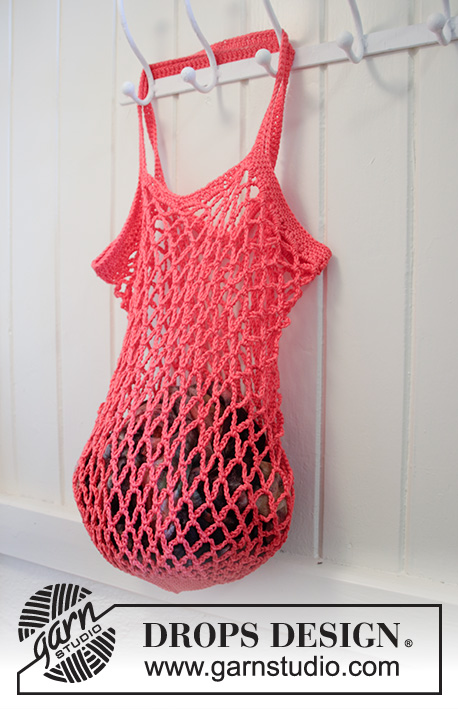
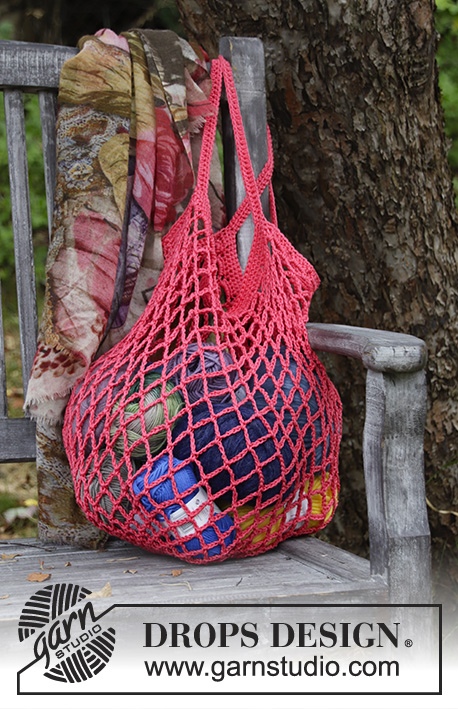
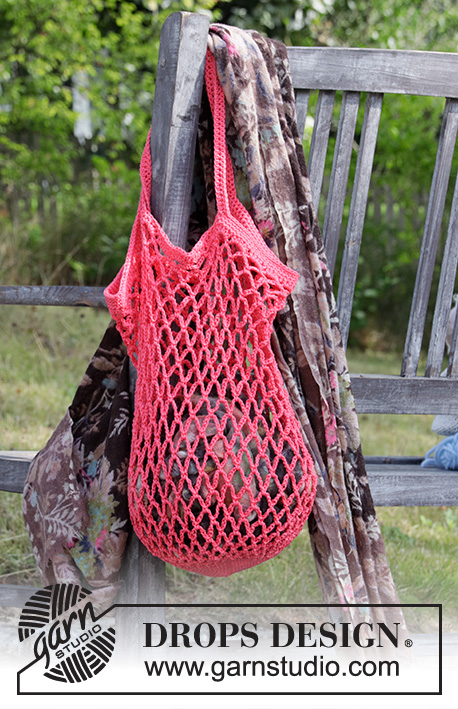

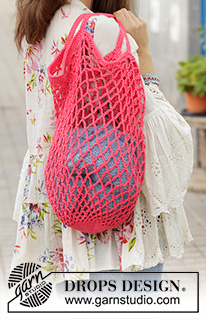

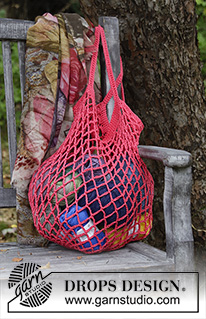
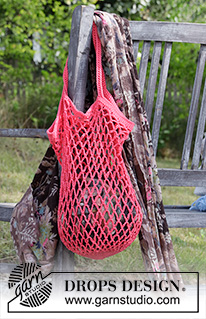









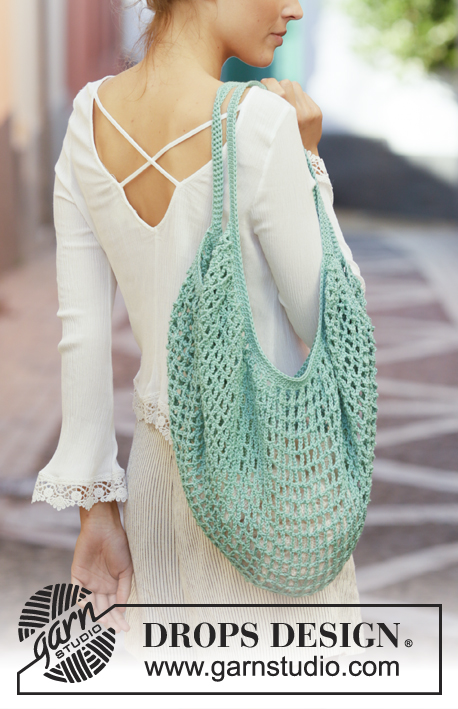

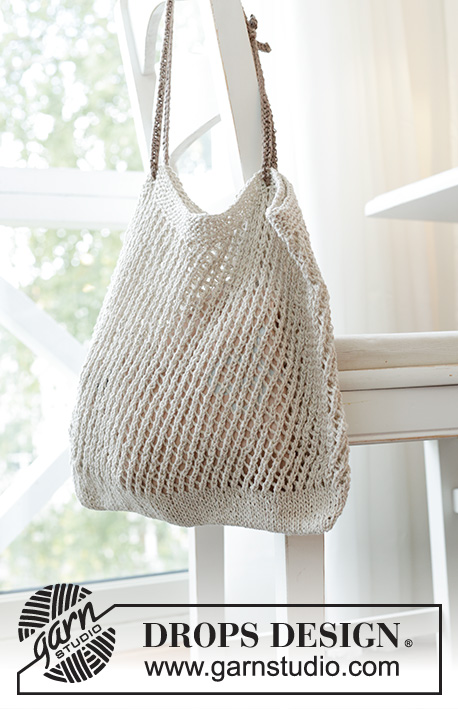










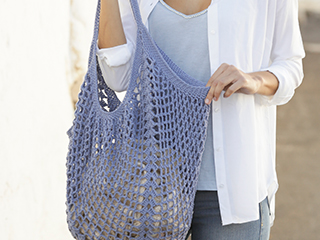









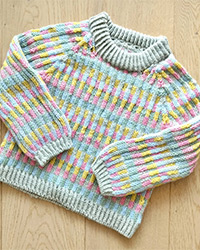
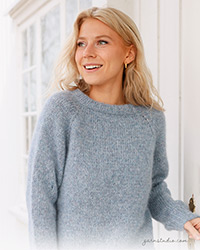


Post a comment to pattern DROPS 187-17
We would love to hear what you have to say about this pattern!
If you want to leave a question, please make sure you select the correct category in the form below, to speed up the answering process. Required fields are marked *.